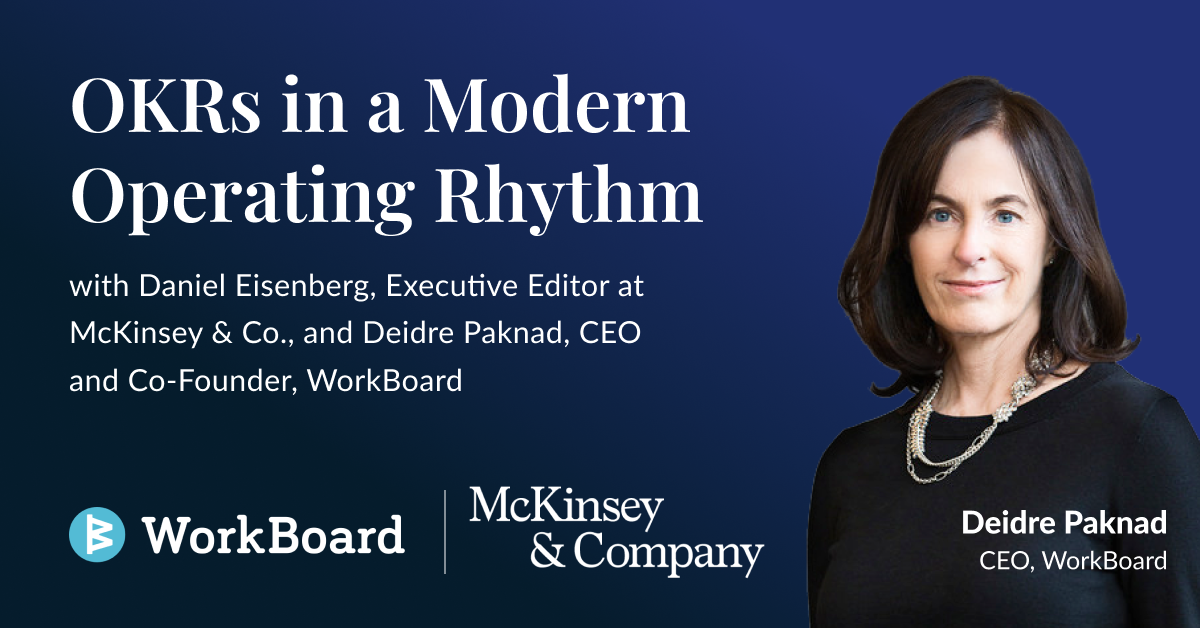OKR Specialist Cole Wise explains how Pax8 uses OKR Retrospectives and WorkBoard to drive great results every quarter.
The best performing teams aren’t great by accident; they get better every quarter at:
- Agreeing on their best possible outcomes at quarter start.
They are ambitious and have real conversations on where the most value is created so they make good trade offs
- Aligning laterally to drive the best organization outcomes.
The opposite of fiefdoms, these teams seek out alignment and set joint OKRs that cross the org chart
- Leaning into insights with intellectual curiosity and honesty.
They are seeking improvement rather than credit, and egos and politics don’t impede the team
- Focusing their time and capacity on their key results.
They recognize that their results are singularly tied to their time and have the guts to avoid distractions and stay dialed into their results
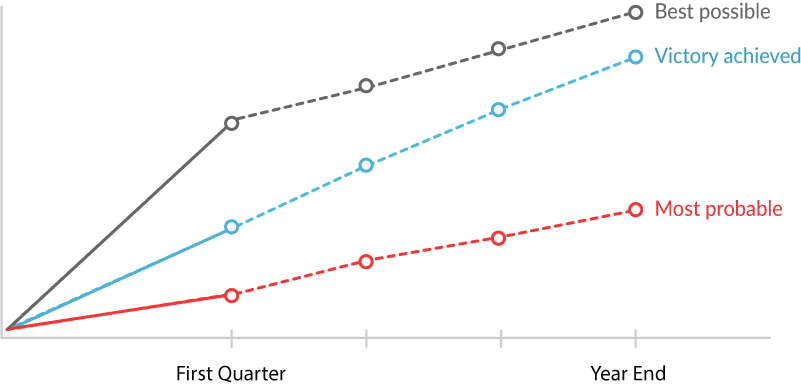
Over the past month, I’ve worked with dozens of teams to reset their OKRs for the new quarter. As teams do their retros, there is a distinct pattern in what the strongest teams celebrate, observe or learn, and decide to improve each quarter — and it’s how they get stronger over time.
“We just proved that when we put something out there for key results, we actually achieve it!”
Fresh from the post it notes in the many retros I’ve hosted this quarter, here are examples of what teams are celebrating, observing and improving:
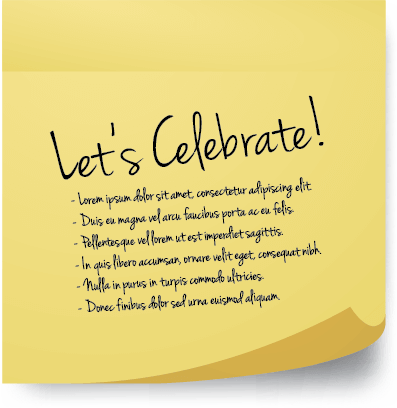 Celebrate
Celebrate
- We came together as a team to decide what mattered most!
- Personally satisfying to see progress and trajectory to results
- When we focus on key results, we really achieve them
- Alignment transparency is awesome
- WorkBoard reminded us to update OKRs weekly, which kept us focused
- It was cool to see our impact!
- Good, focused and valuable cross-team discussions done while trying to clarify OKRs/what are we trying to achieve
- Constant focus on a stable target and alignment of everyone on the same target
- Staying focused on Key Results meant we achieved a lot!
- Drove consistently positive behaviors from the leadership team
- Sharing with my team provided excellent context across our large org that they had been missing.
- OKRs aligned our goals and solidified the team
- Even when we didn't reach a goal we had good conversations on how to adjust moving forward
- WorkBoard gave me awesome insight and drove focus
- WorkBoard drove accountability for me
- Gave line of sight on what everyone needed to do to achieve the outcome
- Iterative process to course correct
- Increasing focus, particularly as quarter went on
- The transparency of our progress throughout and the fact that we followed-through with our objectives. As aspirational as many of them seemed at the outset, we've made good strides accomplishing them
“Having goals that directly affect the business and hitting them.”
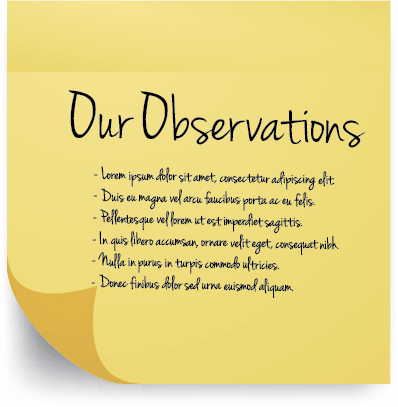 Observe and Learn
Observe and Learn
- Need more operational rigor and to use our meeting time on discussing KRs
- Embrace the interdependencies we have and use more joint OKRs to get alignment
- Too many OKRs – we can focus more
- Be more accountable to each other by better utilization of WorkBoard to measure KRs, and their workstreams and tasks
- Improve what we can measure
- These need to be front-and-center!
- More group sessions to discuss progress/challenges over the quarter
- We pushed through to 100% in many cases - 70% supposed to be ideal - so did we aim too low?
- Resolve open items (who owns the KR?) and conflicts (we can’t achieve that) earlier!
- More discipline in paying attention to OKRs weekly
- Need to improve on our ability to define leading indicators of progress, and measure on a more frequent basis (weekly)
- More executive communication on the importance of KRs & operating cadence on how we track our results
- Some parts of business less represented - need to ensure inclusive
- Everyone update their own KRs
- Avoid binary stuff that stays at nil until something is complete
- Get all OKRs defined and aligned before quarter starts
- Define the primary owner of KR vs. everyone supporting it
“Align more broadly on fewer KRs.”
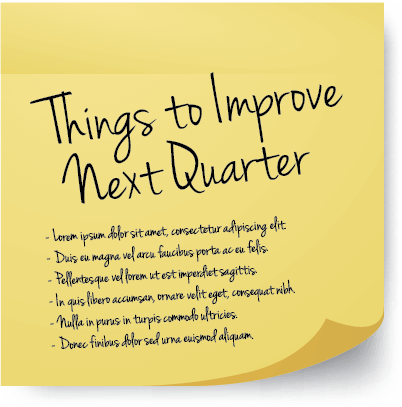 Improve
Improve
- Improve operational rigor. Develop more discipline in paying attention to OKRs weekly so we identify risks and blockers earlier
- Improve what we are measuring – are they truly KEY result? Do we have a way to measure? Do we need to baseline measurement this quarter? Do we need to instrument the measurement?
- Take cross-functional alignment to the next level
- Resolve misalignment earlier in quarter
- Product OKRs should include sales, CX, dev and product management
- Executive communication on the importance of results and operating cadence
- Integrate to WorkBoard more to streamline updates
“We need to localize this further into our org to really achieve our best.”
To help teams with retrospectives that move them forward, we use a couple tools. You can find them here – they include the questions to ask in the retro, a post-it team exercise for what you’ll celebrate, learn and improve, and my personal favorite, the Time Pie team exercise. Each of the retro tools help teams reconnect with their shared aspirations and achieve their best possible results together.
Success is a team sport and champion teams practice to improve their game (and they tap good coaches to help them along the way!).
About the author

Sameera Moinpour
OKR Coach and Director of Client Services at WorkBoard
Sameera works closely with enterprise leaders and their teams to define, align, measure their strategic priorities, and drive real time alignment. She facilitates the transition to the OKR methodology and enables a fast start and continued acceleration with WorkBoard. Sameera has facilitated and coached over 1000 teams on setting, aligning and achieving OKRs and leads the OKR Coach Certification Program at WorkBoard.






 Celebrate
Celebrate Observe and Learn
Observe and Learn Improve
Improve 


